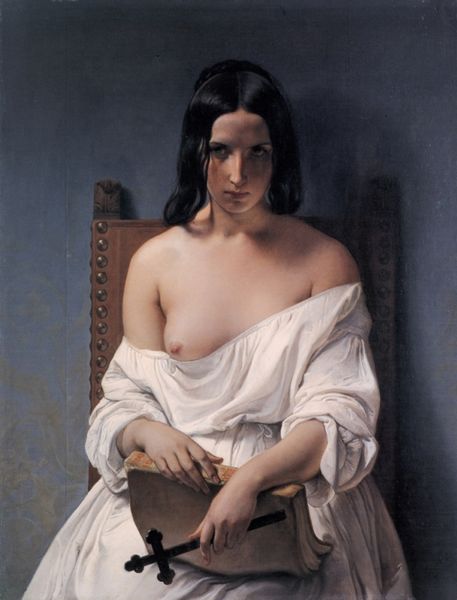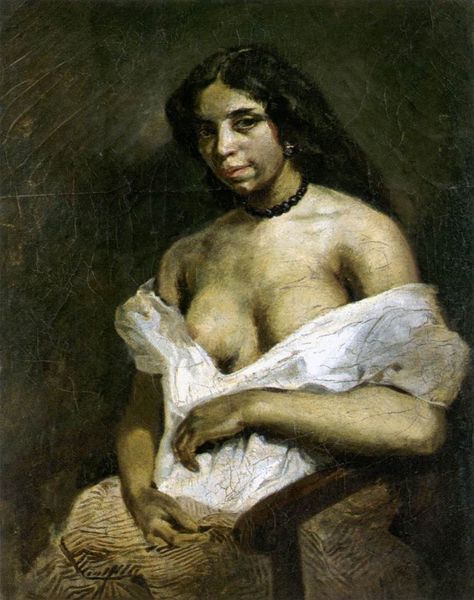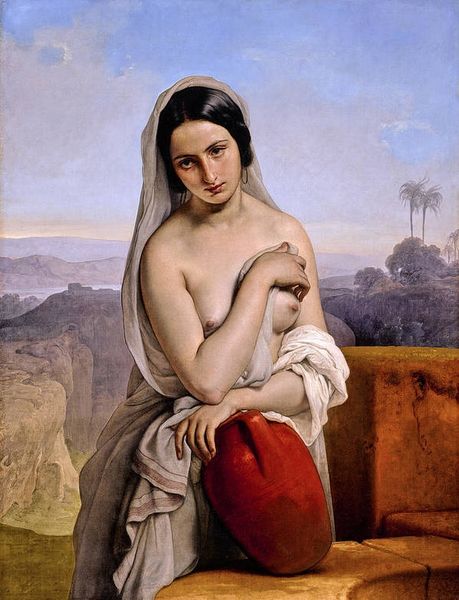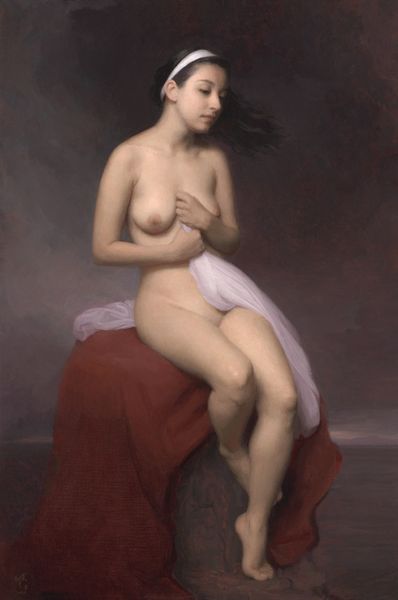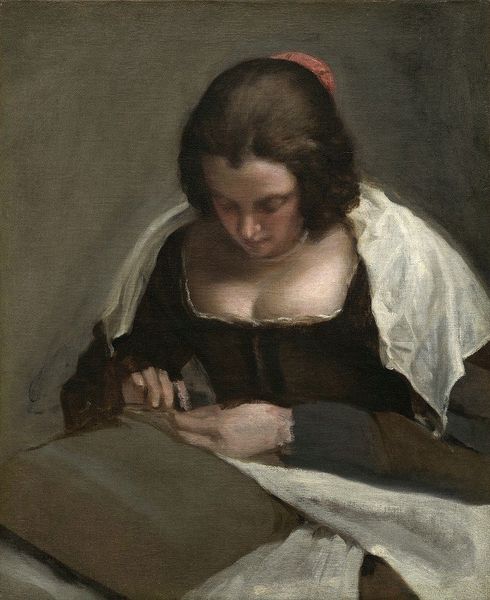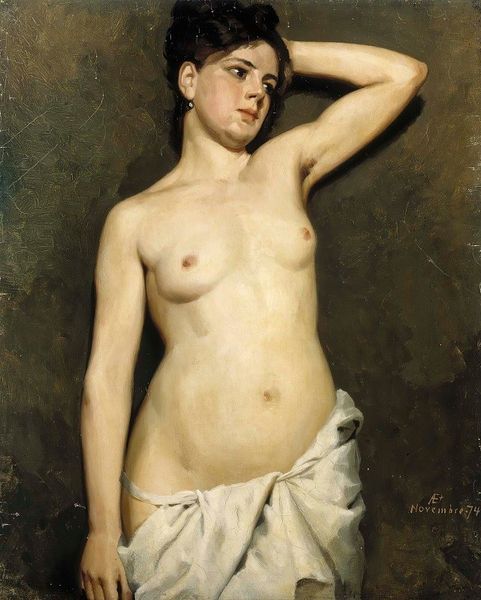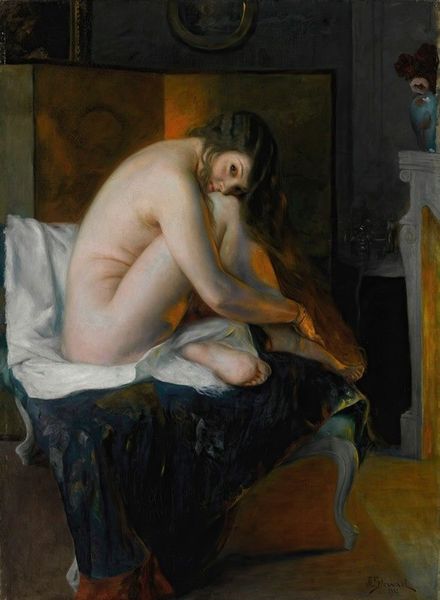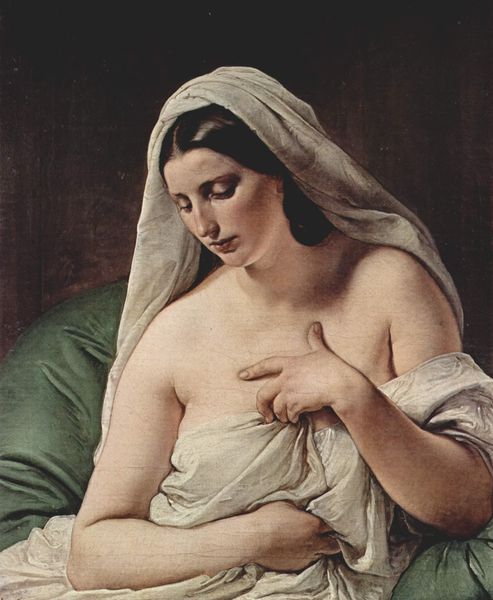
Copyright: Public domain
Editor: Here we have Francesco Hayez's "Meditation on the History of Italy (2nd version)" painted in 1851 using oil paints. The woman depicted seems lost in thought. What can you tell me about its layers of meaning? Curator: This piece operates on many levels. Note the sitter's partially exposed breast and thoughtful expression. Hayez created this allegory amidst the Risorgimento. How do you think her nudity and reflective gaze function within this historical context? Editor: It’s intriguing... Is it about vulnerability or something else? The open book also strikes me as significant, perhaps as a representation of lost history or the need for historical awareness. Curator: Precisely! Consider how she embodies both the fragility and resilience of the Italian nation at a time when it was struggling for unification and independence. This representation normalises the objectification and politicisation of the female body during nationalist movements. And what of that dark background, the weight of history looming, right? Editor: That’s powerful. The somber colors and her almost melancholic posture now read to me as a commentary on the struggles inherent in nation-building and women’s role within it. Curator: It certainly suggests how Romanticism engaged with the urgent political concerns of its day and the visual grammar involved in forging modern Italian identity. It prompts reflection on whose stories are told and whose are silenced within national narratives. Editor: Looking closely has completely changed how I see the painting. I appreciate that connection between historical events, gender, and art! Curator: Indeed. Hayez prompts us to continually interrogate the power dynamics shaping both the past and present.
Comments
No comments
Be the first to comment and join the conversation on the ultimate creative platform.
